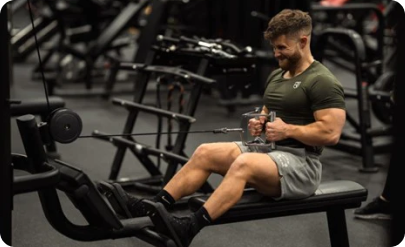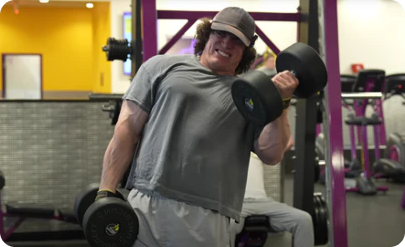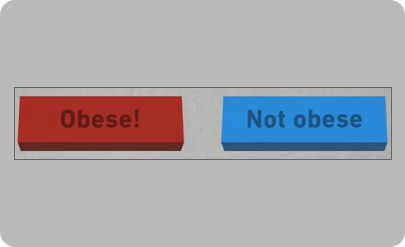“How many sets should I do to build muscle?”
The answer depends on two factors:
- How long you’ve been training
- How much time you have to train
“Time” is simple enough. If I told you the best way to build muscle is to spend three hours a day in the gym, most of you would say that’s out of the question. So even if it was true—which it isn’t!—it’s not a practical recommendation.
“Training” is a bit more nuanced. It’s not the same as “working out.” It means you’re following a program with the goal of making specific adaptations. In this case, you’re trying to change the way your body looks and performs by making your muscles bigger and stronger.

I divide training experience into three categories:
- Beginner: less than 12 months of consistent, proper training experience
- Intermediate: 1 to 4 years of consistent, proper training experience
- Advanced: more than 4 years of consistent, proper training experience
I need to clarify one more term before we get to my recommendations:
We count sets based not on the exercise, but on the muscles involved in the movement. So a set of bench presses counts as one set for your chest, one set for your front delts, and one set for your triceps. It’s still one set of one exercise, but it applies to three different muscles.
Same with a set of lat pulldowns. It counts toward your weekly total for your back, rear delts, and biceps.
A set of curls, meanwhile, counts as one set for your biceps.
Beginner
If you’re new to training, you don’t need to spend a lot of time in the gym. You can build muscle with just 1 to 5 sets per muscle per week. You could easily manage that with two full-body workouts per week. For your compound exercises, you could do 2-3 sets per exercise. For any isolation exercises, you could do just 1-2 sets per exercise and get the job done well.
There’s no harm in spending more time in the gym, though. If you have the time and ambition, you could start with 4 to 8 sets per muscle per week, and work your way up to 8 to 12 sets.
Doing those extra sets will likely get you gains a little faster, but not by much. It’s up to you if you want to prioritize quick and effective workouts (that get most of the results) or less quick but more optimal workouts.
Intermediate
Your first year in the weight room is when you get those coveted “newbie gains.” Just about anything you do will make you bigger and stronger, and possibly leaner as well.
You should still make progress in your second and third years of training, but you’ll have to work harder for it. 4 to 8 sets per muscle per week is now your minimum.
If that’s what you were doing as a beginner, you’ll want to aim for 8 to 15 sets per muscle per week. At this point, your weekly volume will be much more manageable if you train three to five days a week, working each muscle at least twice.
Advanced
You’re now a seasoned lifter, which means the easy gains are deep in the rear-view mirror. You can maintain them by continuing what you did as an intermediate, and that’s fine. 4 to 8 sets per muscle per week will still be enough to maintain what you’ve built and you may even keep making gains on that volume if:
- You’re respond well to low volumes
- You start training harder (you weren’t pushing quite hard enough in your early years)
- You get your nutrition and sleep dialed in better
But continued progress usually requires higher training volume at this stage: 12 to 20 sets per muscle per week. You can probably still manage to get it all in with three full body workout per week. But the workouts might feel a lot easier if you train four to six days a week, again hitting each muscle at least twice.
Now, if you’re serious about maximizing your natural potential, and perhaps even competing as a bodybuilder, you should at least experiment with high training volumes once. Most people do respond well to it, assuming to they still train hard enough. That means 15 to 25 sets per muscle per week. To make sure recovery doesn’t become an issue, you may want to increase volume that high for just 1-2 muscles at a time, while keeping others in the usual range.
If some body parts aren’t as well developed as others, consider increasing the volume even more for those muscles, while reducing volume by a similar amount for your stronger muscle groups. That should ultimately produce a more balanced physique.

You may also find at this stage that certain muscles need more than others. For example, my back does great with 15-25 sets per week but for my chest, that would be overkill. Generally I’ve found the back, shoulders, glutes and quads tend to do well with higher volumes.
If you’re in the camp of lifters who want quick workouts, I wrote a program designed to get you the best gains in the least time possible. It’s called The Essentials Program and it guarantees each workout will take no longer than 45 minutes.
If you’re looking for optimal workouts and don’t mind if they take a little longer, check out my Pure Bodybuilding Program. This is for serious intermediate-advanced level lifters who want to make their best gains possible.
Until next time,
Jeff



